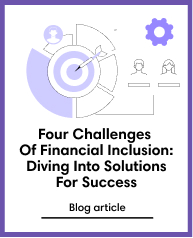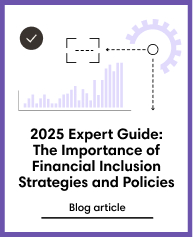Financial Inclusion
Feb 24, 2022
Country Spotlight: Colombia, the third-largest fintech ecosystem in LATAM
Subscribe to our newsletter

COVID-19: The Acceleration of Digital Transformation
The transition of many companies towards a more digitised business model began prior to the start of the Pandemic. In 2020, this trend accelerated, and those sectors resistant to change had to innovate to survive.
In the first months of 2020, more than 2 million people in Colombia accessed financial products for the first time. This was due, in large part, to the inability to travel during the pandemic. As a result, by the end of 2020, more than 31.6 million Colombians had at least one banking product.
With Covid-19, technology became the new tool for social development, allowing wider access to banking through contactless payments, payment for services via mobile, money transfers, among others.
Mobile Penetration
Colombia has a total population of 51 million and a mobile connection of 60.8 million devices through mobile phones, tablets and laptops. In 2021, mobile connections increased by 1.9% and Internet use increased by 4% compared to 2020.
Today there are 34 million users in Colombia who spend 10 hours a day surfing the Internet, which shows that connectivity is a concept that is here to stay.
Fintech ecosystem
Colombia is the third-largest Latin American fintech ecosystem after Brazil and Mexico. The fintech trade is flourishing in Colombia, with an expansion of 120% each year and investments of more than $1 billion in the past three years, according to a report from the Fintech Times.
By 2022, there will be more than 330 fintechs distributed in different segments of the industry, including digital payments and credits, crowdfunding, business finance, and neobanks.
The improved access to digital solutions has prompted more consumers to experiment with emerging payment methods, such as mobile wallets and contactless cards. For example, Colombian mobile payment app RappiPay reported processing 20 million transactions last year. As well, digital wallets have increased from 12 million users to 23 million in 2021.
Today more than 32 million people in Colombia have some type of financial technology solution. Colombia is considered the 8th country in the world with the highest adherence to fintech.
A new tool for financial inclusion
The country’s unbanked population has decreased noticeably amid the influx of new payment methods, shrinking from 30% in 2015 to 23% in 2020. However, by 2021 there was an increase of 1.6 percentage points (pp) compared to the previous quarter (December 2020), that is, about 700,000 more adults in the banking system.
Although Colombia has a high percentage of the adult population with access to banking services, there are still large gaps to close within the rural population, some segments of the urban population and women. The access to financial services continues to be higher in cities and agglomerations (98.5%), followed by intermediate municipalities (76.1%) and rural municipalities (69.3% rural and 57.1% dispersed rural). In relation to gender, the access indicator for men was 92.7%, while that for women was 85.2%.
Credolab
Given the digital success and the high percentage of banking penetration in Colombia, the country has become an attractive ecosystem where fintechs are looking for progress and the democratisation of financial services.
Credolab offers a digital scoring solution based on evidence to predict consumer behaviour, speed up credit processing operations, and improve credit risk management.
With alternative data and machine learning, lenders can calculate the credit scores based on people’s mobile and web behavioural data— making a lending decision even when they don’t have a credit history and generating a positive impact in the Colombian financial market.
Learn more about the solutions offered by Credolab





